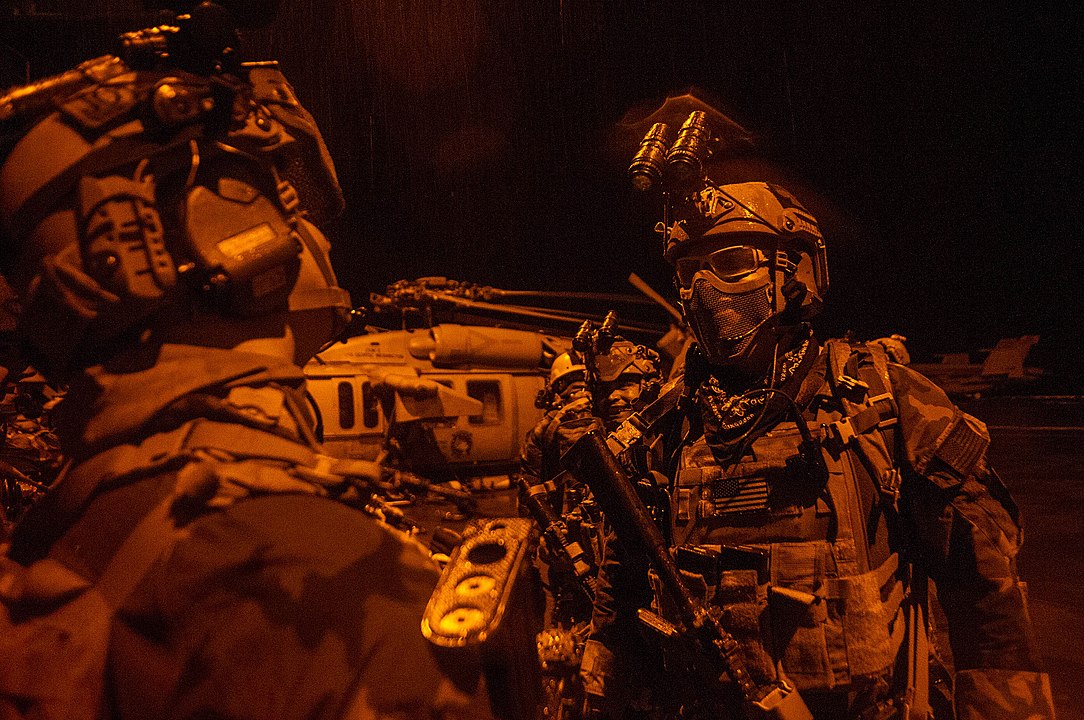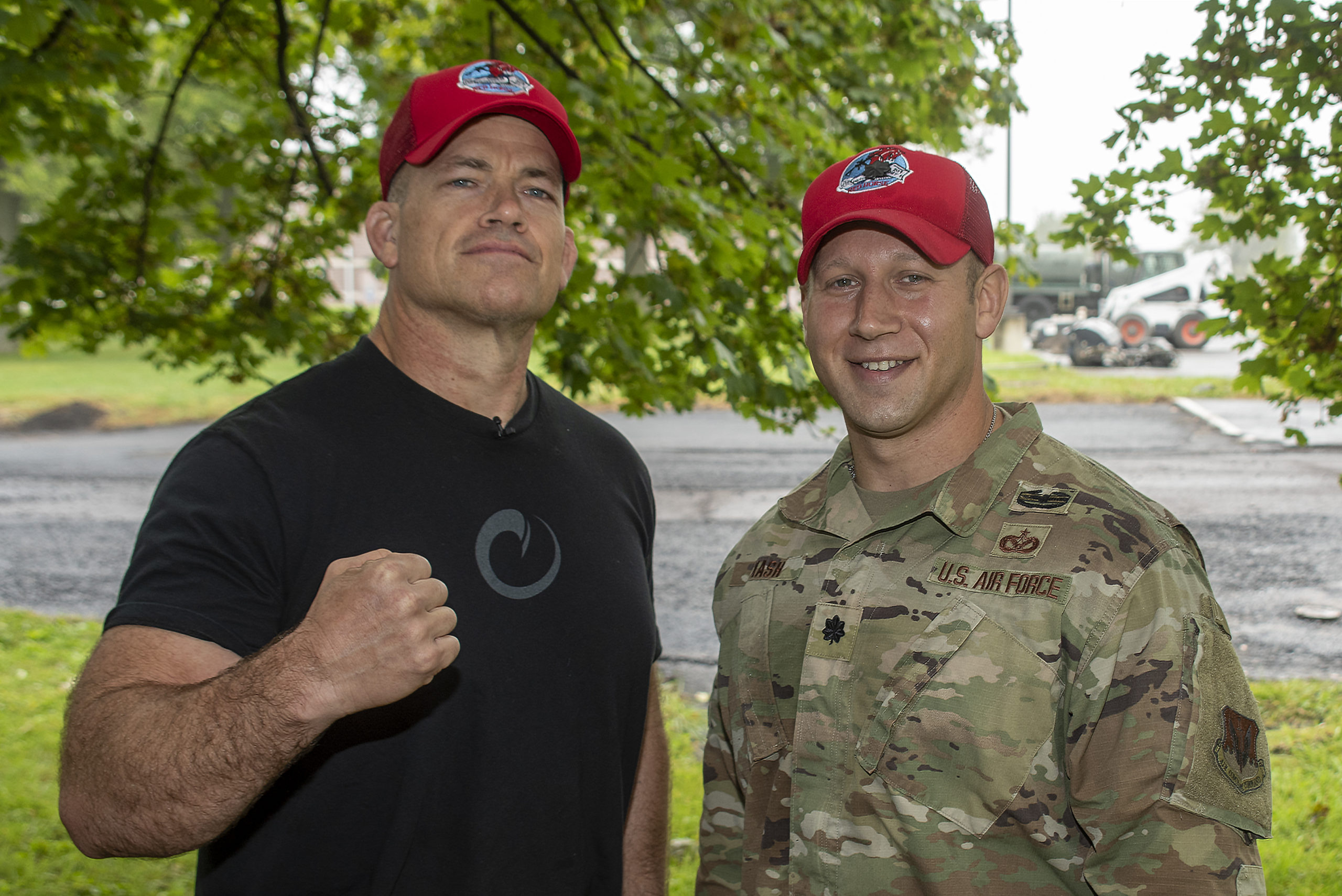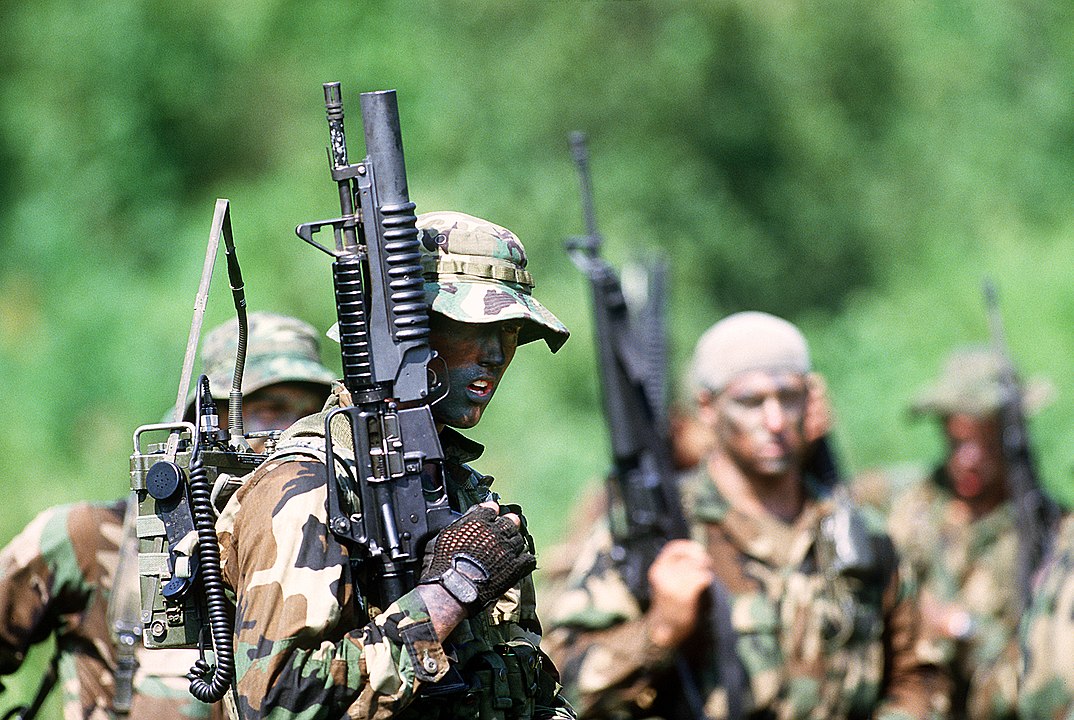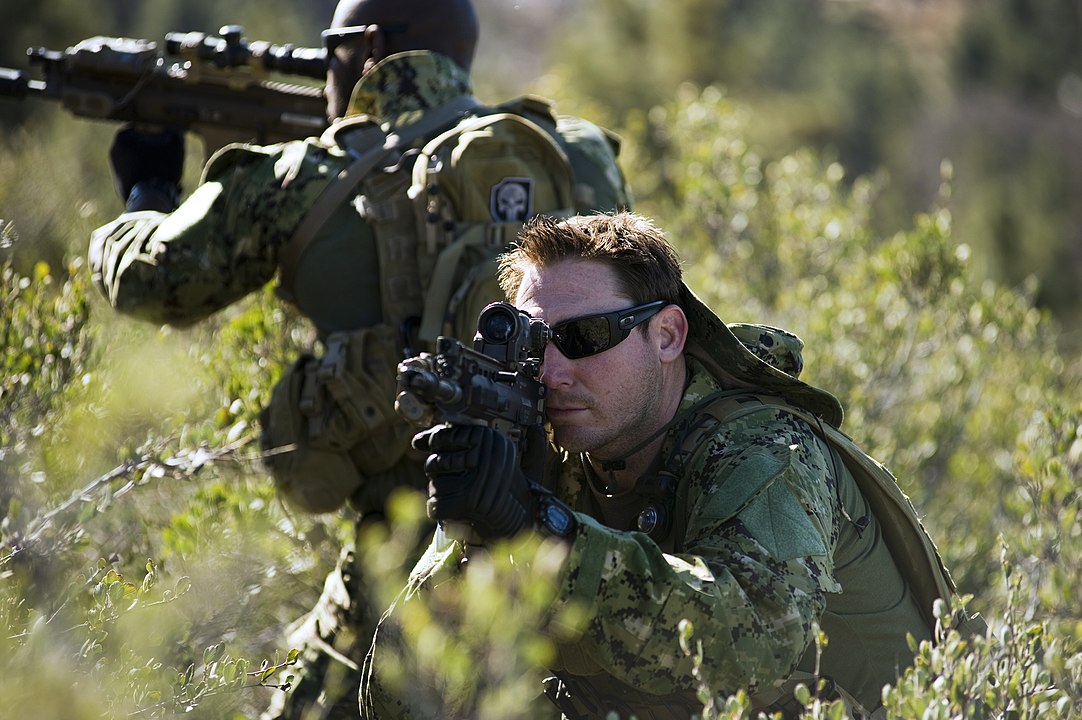American Monsters

By Thomas Lambert
Staff Writer
18/12/2021

SEALs during a training mission aboard the Nimitz-class aircraft carrier USS George Washington
In January 2018, with the assistance of American special operations forces, Iraqi troops recaptured the city of Mosul from ISIS. The victory was trumpeted as a triumph of civilization and progress over the forces of barbarism and reaction – and perhaps the final nail in the caliphate’s coffin. Yet within a few months, worrying reports began to emerge. Some US special operations forces had committed acts of gratuitous violence that amounted, in the opinion of independent organizations like Amnesty International, to war crimes. And right at the heart of the controversy was the US Navy’s flagship special operations force, widely recognized as perhaps the most capable fighting unit the world had ever seen: the Navy SEALs.
One of the accused was Eddie Gallagher. Gallagher had trained as a Marine, then graduated from the Navy’s “BUD/S” (Basic Underwater Demolition/SEAL) program – the SEALs’ grueling training course – in 2005. His conduct in previous campaigns had won him two Bronze Stars for valor in the field, as well a nickname among his colleagues: “Blade.” According to two witnesses (both fellow Navy SEALs), Gallagher set his sights on a 17-year-old prisoner, Khaled Jamal Abdullah, currently in the care of US medics; he spoke into his radio (“he’s mine”), then walked up to the medic and Abdullah, and without uttering another word, stabbed Abdullah to death with his hunting knife. Gallagher and his commanding officer, Lieutenant Jake Portier, then stood over the body and posed for photographs which he sent to a friend in California with the caption: “Good story behind this, got him with my hunting knife.”
At trial, the evidence against Gallagher certainly looked damning. Several fellow SEALs accused Gallagher of recklessness, and other military snipers admitted to tampering with the sights on his rifle in a bid to temper his bloodlust. A rich seam of prior abuses was unearthed: in 2010, Gallagher was implicated in the shooting of a young Afghan girl; in 2014, he was accused of trying to run over a Navy police officer with his car; by 2015, according to David Philipps in the New York Times, Gallagher had acquired a reputation as someone who was more interested in “fighting terrorists” than following orders. Yet despite the wealth of circumstantial evidence, the case was difficult to prosecute. The Navy dithered a whole year before beginning a formal investigation, and of course no bodies were recoverable from the chaos of an urban siege. As the trial progressed, Gallagher’s fellow officers began to close ranks and cast aspersions on the earlier witnesses. Even so, Gallagher was found guilty of some of the more minor charges, and demoted.

Members of Alpha Platoon, SEAL Team, 7 pose with the corpse of an ISIS prisoner of war in Iraq in 2017. Eddie Gallagher in the cap in the middle.
But what’s most striking is what happened next. Even if you accept the most charitable version of events, Gallagher had gone rogue and discredited the military by posing with a dead prisoner of war as a trophy. And yet even as he returned to the United States in disgrace, he began to carve out a new and lucrative career as a social media influencer. There were TV appearances, including an episode of CBS’s 60 Minutes; there was an interview with ex-SEAL podcast host Mike Ritland; there was the bestselling tell-all memoir The Man in the Arena: From Fighting ISIS to Fighting for My Freedom, published by Ballast Books. There was an Eddie Gallagher clothing line, Eddie Gallagher nutritional supplements. There was even an Eddie Gallagher action figure. By the time US President Donald Trump pardoned him in 2020 – in the first such instance since Nixon’s 1971 pardon of William Calley, one of the perpetrators of the My Lai Massacre – the Gallagher brand was a commercial powerhouse.
Eddie Gallagher might be the most frightening convergence of the two sides of the US Navy SEAL – the American hero and the American monster – but his commercial success is far from unusual. The SEAL team, once a specialized and inconspicuous subdivision of the vast US military enterprise, has in recent years become its brightest star, the one organ of the American deep state which even the most suspicious citizen can admire. Ex-SEALs are everywhere, touting their toughness, their ruthlessness, their efficiency. They’re at the vanguard of American self-help culture: burgeoning “high-performance” and “self-actualization” industries are studded with names like Jocko Willink, Andy Stumpf, Marcus Luttrell, and David Goggins. You can watch them as they break pull-up records, do jiu jitsu, hunt big game. You can buy their personalized training plans and diet regimens, sports clothing and protein powders. You can even buy personalized shooting experiences with the SEAL who shot Osama bin Laden.

Ex-SEAL John Gretton “Jocko” Willinck (left) (Picture Credit: Senior Airman Wilfredo Acosta)
Much of the content is good old fashioned American Stoicism: the “mind over matter” message, the obsession with inane physical tasks, the loose affiliation with the political right. For the most part, they appear to be just the next installment in the “men’s movement” tradition once dominated by people like Robert Bly. Bored, emasculated, middle-managing males are told by glittering he-men that with the right workout plans, the right blend of expensive powders and pills, they can be SEALs too.
All this is predictable. But it’s worth asking, too, what exactly this glossy, overproduced industry of ex-SEALs belies. What role does this latest paragon of American manhood actually perform in the military, or indeed in the world? And what does it say about a culture when its idea of bravery, accomplishment, distinction, is a man like Eddie Gallagher? The modern Navy SEAL is a blend of two immensely attractive, if contradictory, ideals. Both of them are sources of infinite fascination to the ordinary citizen, imprisoned in the banalities of modern life. But they have combined, in recent years, into something extremely dangerous.
The first is efficiency. SEALs have won a reputation as being somehow devoid of human weakness – little kernels of pure competence, like parts in a machine. The grueling training regimens, culminating in the famous “Hell Week” that rounds out all BUD/S training program, is the stuff of folklore, and a favorite talking point of ex-SEALs on the influencer circuit. By the time SEALs graduate, they are fond of reminding us, human weakness has been all but stamped out of them. Operationally, however, “efficiency” comes to mean something slightly different. Right from the SEALs’ inception, they have been used as a way for Unified Combatant Command (the highest level of American military authority, second only to the executive branch) to bypass scruples that would plague other units, and avoid oversight and due process. They do what needs to be done, with no qualms and no questions asked. What this means, in practice, and what it has always meant, is extrajudicial killing – that is, killings carried out in the absence of judicial mandate for execution and, for the most part, armed resistance. During their debut as a large-scale force in Vietnam, SEALs carried out the Phoenix Program – a vast project of assassinations across Indochina believed to have dispatched around 87,000 people. In Iraq and Afghanistan, their role was much the same: they undertook extrajudicial killings with such profligacy that even Hamid Karzai, himself an American puppet, complained as early as 2002 of their excesses.

SEALs in a training exercise
Efficiency, with all its grisly consequences, is the most obvious reason for the SEALs’ cachet. Yet even as they position themselves as the US military’s “tip of the spear,” the SEALs have acquired a parallel reputation – as rogues, outlaws, somehow aloof from the military rule of law: its codes, its regulations, its chains of command. Since the turn of the century, the SEALs have been granted a host of special privileges designed to differentiate them from the clean-cut nerds of the rest of the US military. They can sport long beards; they wear special vests. One SEAL Team 6 officer, Hugh Wyman Howard III, reportedly distributed 14-inch customised tomahawks to his squadron of “Redmen,” rallying them before operations with instructions to “bloody the hatchet.”
The mythology is that of the Western; the imagery that of the biker gang. SEALs are separate, special; so useful to the state that they are allowed to do things their own way. Clearly, something about this desperado persona resonates deep in the American soul. As Oscar Wilde inimitably put it: “The Americans are certainly great hero-worshippers, but always seem to take their heroes from the criminal classes.”
SEALs are separate, special; so useful to the state that they are allowed to do things their own way.
Yet what this roguishness amounts to, in the cold light of military operations, is an unprecedented and dangerous lack of oversight. Indeed, this lack of accountability is enshrined in the SEAL Teams’ very structure: in other sectors of the military, officers have tended, since the turn of the century, to rotate out of action along with the unit they command. The SEALs, by contrast, conduct an officer rotation system. A commanding officer will likely only remain in charge of his SEAL team for around three years; the “operators” under him, by contrast, remain together for decades. The result is a private code of conduct among the rank-and-file that resists all official oversight. “The SEALs believe that they can handle the discipline themselves, that’s equal to or greater than what the criminal justice system would give to the person,” said Susan Raser, a retired Naval Criminal Investigative Service agent. “They have an internal process that they think is sufficient and they are not inclined to cooperate unless they absolutely have to.” We ought to remember this when ex-SEAL influencers wax familial about “brotherhood,” or say that they would “do anything” for their fellow team-members: what this has amounted to, in recent years, is a loyalty that transcends any moral or ethical commitment, not to mention all official regulation and censure.

SEALs training in California in 2012
It would be one thing if the SEALs internal codes succeeded in tempering their excesses, but recent evidence suggests anything but. In recent years, reports of malpractice across SEAL divisions, but particularly in the most distinguished company, SEAL Team 6, have become widespread. In a 2017 article for The Intercept, Matthew Cole provides a litany of abuses and instances of misconduct in the field of battle, spurred by honor codes that are entirely independent of military objectives and the rules of war. There are the usual accusations of over-aggression (like when SEALs fired indiscriminately on a convoy of Afghan cars carrying women and children in 2001). But harder to explain were the grisly abuses that SEALs inflicted on prisoners and corpses. Darkest of all was a new practice. Cole wrote that among photos at SEAL Team headquarters at Dam Neck were an unusually high number that:
show deceased enemy combatants with their skulls split open by a rifle or pistol round at the upper forehead, exposing their brain matter. The foreign fighters who suffered these V-shaped wounds were either killed in battle and later shot at close range or finished off with a security round while dying. Among members of SEAL Team 6, this practice of desecrating enemy casualties was called “canoeing.”
An unnamed former SEAL Team 6 leader was unequivocal: “There is and was no military reason whatsoever to split someone’s skull open with a single round. It’s sport.”
“There is and was no military reason whatsoever to split someone’s skull open with a single round. It’s sport.”
According to the same source, such practices became “big” around 2007. But in recent years, abuses of local Afghans and Iraqis have begun to spill over into abuses of fellow members of the military. Even within the military, the SEALs are perceived as out of control. In July 2019, an entire platoon of Navy SEALs was removed from Iraq after accusations of “serious misconduct.” No details were initially forthcoming, but it was later reported that a member of the unit raped and almost choked to death a female sailor. In the same month, an internal report concluded that abuse of Schedule 1 drugs, particularly cocaine, was rife across the SEAL teams, and that testing procedures were so lax as to be a “joke.” Early this year, Chief Petty Officer Tony DeDolph was sentenced to 10 years jail for choking to death a Green Beret named Logan Melgar as part of a “hazing” ritual. According to an investigation by the Daily Beast, multiple sources allege that Melgar discovered the SEALs were embezzling money from a fund used to pay informants. None of this information appears to have been brought up at trial.
What is beginning to emerge is a picture of the SEALs far removed from the patriotic, disciplined “band of brothers” that ex-SEAL influencers seem intent on selling. The dissonance is completely intentional. The symbiosis between American media and the American military is well-documented, but even within this rich tradition the SEALs have been uniquely glamorized since 9/11. Lone Survivor, American Sniper, Captain Phillips, Zero Dark Thirty: all regurgitate the same mythology, the same imagery. Savagery is viewed as zeal; lack of oversight as an asset.
What we’re witnessing, in fact, is a branding exercise. The US’ military and paramilitary institutions have a rich tradition of rogue activity, spearheaded mostly by the CIA – from Operation Condor in Latin America to the assassination of Patrice Lumumba in the Democratic Republic of the Congo. But in recent years, they have been embroiled in a public relations crisis. The American left still remembers CIA abuses in Latin America, while the American right has seen a rise in deep-state paranoia, and mistrust over some of the more spurious “Russiagate” allegations that the organization has been pushing.
Meanwhile, the SEALs are still cool. The SEALs killed Bin Laden; the SEALs, in the eyes of their extensive fanbase, can do no wrong. Yet in recent years, the SEALs have come to play exactly the same tenebrous paramilitary role that organizations like the CIA once did. After Vietnam, the US military chain of command was changed so that an increasing number of Navy SEALs received their orders from an entirely separate body – JSOC (Joint Special Operations Command) – from the rest of the Navy. As early as 2001, JSOC was reported to be conducting operations jointly in Afghanistan with the CIA’s Special Activities Center. When Afghanistan fell to the Taliban this year, JSOC was running so-called “Omega” units – new, hybrid teams of SEALs and CIA operatives. Australian journalist Andrew Quilty wrote:
the program temporarily strips special forces of their regular military designation — a process known as “sheep-dipping” — and places them under CIA command. This enables the CIA to circumvent the restrictions placed on fighters who ordinarily operate under regular wartime Title 10 authority, placing them instead under the agency’s Title 50 authority for covert actions.
This, in fact, is the primary role of special operations forces these days: covert, unaccountable, engaged in paramilitary maneuvers (usually extrajudicial killings) for masters outside the military chain of command. For most of the Cold War, when the American executive branch wanted to exert force overseas it was faced with a choice: either it could deploy conventional special operations forces, with all the guns-blazing attention military maneuvers always attract, or it could send in CIA operatives – who worked under the radar, but lacked the firepower of the military. The growing separation of the SEALs and other special operations units from the military, under the command of JSOC, solves this conundrum for the executive. The SEALs have at their disposal the Navy’s firepower, with the CIA’s scruples. They wreak their violence secretly, without the knowledge of the press or the electorate. As one former CIA officer who was involved in special ops overseas put it, where once spy work was a matter of slipping unnoticed through Eastern European cities, now “clandestine human intelligence involves showing up in a Land Cruiser with some [former] Deltas [the SEALs’ army equivalent] or SEALs, picking up an asset and then dumping him back there when you are through.” When we combine this with what we already know about the abuse of joint CIA-SEAL assets in Afghanistan, not to mention the CIA’s notorious “black sites” in Iraq, this new secret collaboration starts to look very dubious indeed.

SEALs in a training exercise on San Clemente Island
No wonder so much time and capital is invested – so many action figures churned out, so many execrable movies green-lit – making the SEALs look like honorable rogues, operating outside the usual rules to defend the country. Contrary to widespread belief, the legitimacy of US military and paramilitary operations is not simply ingrained in American culture; it is in the process of being constantly manufactured, farmed, among the electorate. The lionization of the SEALs is the founding myth of a new, even darker, era in military affairs – an era in which operations are commanded by shadowy councils and carried out with little institutional oversight; in which the border between special operations forces, intelligence, and private military contractor is so porous as to be non-existent, and combatants are “sheep-dipped” into top secret “Omega Teams” when they want to commit violence under the veil of secrecy. And the private honor codes, the language of brotherhood, the trophies and tomahawks, form a part of this structure, too. They’re not lovable quirks or charming idiosyncrasies. They are ways of ensuring the SEALs remain monsters, even as they’re being sold back to us as heroes.
Note: A previous version of this story wrongly listed Mat Best as a former Navy SEAL. In fact, he is a former Army Ranger. We regret this error.
